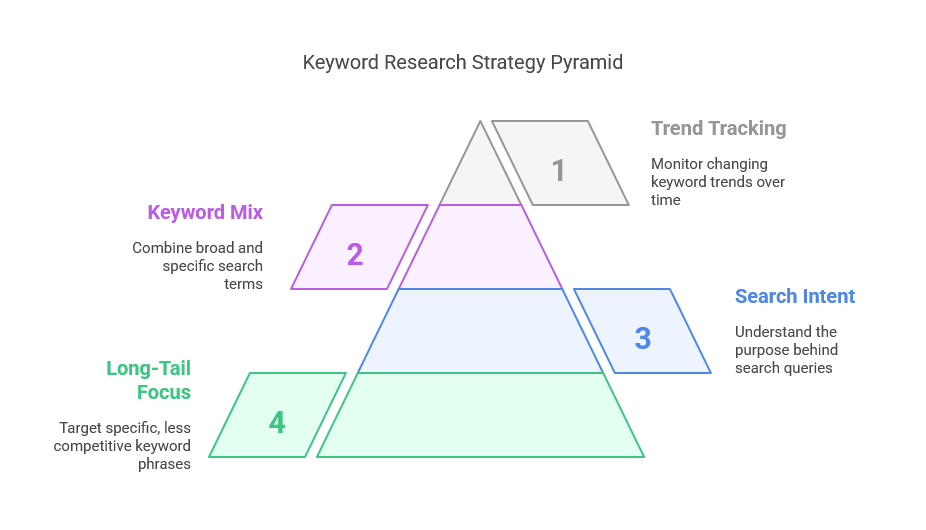Keyword Shitter is a tool that often raises eyebrows because of its quirky name. However, it’s far more than just a humorous title—it’s a powerful resource for anyone involved in search engine optimization (SEO). Understanding which keywords people are searching for can make all the difference in improving your website’s visibility on search engines like Google. With Keyword Shitter, you get quick, reliable, and affordable keyword suggestions that help you take your content to the next level.
In this article, we’ll explore why Keyword Shitter is an essential tool in any SEO strategy, how to use it effectively, and how it compares to other SEO tools available today.
Keyword Shitter: What Is It?
Keyword Shitter is a free, easy-to-use online tool that helps users generate an extensive list of relevant keywords. Whether you’re new to SEO or a seasoned professional, you’ll find that it offers a quick way to discover keyword opportunities that you can target in your content strategy.
The name might be a little offbeat, but the functionality is straightforward. You enter a primary keyword (a broad search term related to your business or industry), and Keyword Shitter will return a list of related keywords. The result is a comprehensive list of search terms to help your content rank higher in search engine results pages (SERPs).
What makes Keyword Shitter stand out is its speed and simplicity. Rather than spending hours searching for keywords manually or paying for expensive tools, you can use Keyword Shitter to get results in mere seconds.
Why Keyword Shitter is Essential for SEO
SEO is an ongoing process that involves much more than just creating content. One of the most crucial aspects of SEO is keyword research. You can’t optimize your content effectively without knowing which terms and phrases your audience is searching for. Here’s why Keyword Shitter is essential to your SEO efforts:
1. Instant Results
The most appealing feature of Keyword Shitter is its speed. Unlike many traditional keyword research tools that can take time to generate results, Keyword Shitter produces hundreds or even thousands of relevant keyword suggestions in just seconds. This can save you hours of work when researching your SEO strategy.
For example, to create blog content about healthy eating, input a general keyword like “healthy recipes.” Keyword Shitter will generate a long list of variations such as “easy healthy recipes,” “low-calorie dinner recipes,” or “healthy smoothie recipes.” With this list, you can select the most relevant terms for your content.
2. Cost-Effective
Another reason why Keyword Shitter stands out is that it’s completely free. Most premium keyword research tools like Ahrefs, SEMrush, or Moz require a paid subscription to unlock their full potential. While these tools offer in-depth analysis and valuable features, they can also be expensive, especially for small businesses or individuals just starting in SEO.
With Keyword Shitter, you can get reliable keyword suggestions at no cost. This makes it an excellent option for budget-conscious marketers or those just beginning to explore SEO.
3. User-Friendly Interface
Many advanced SEO tools have a steep learning curve, which can be intimidating for beginners. Fortunately, Keyword Shitter has a straightforward and intuitive interface. It doesn’t require you to navigate through complicated menus or spend hours learning how to use it. All you need to do is input a keyword, press the “Start” button, and watch the tool generate a list of related keywords within seconds.
This makes Keyword Shitter a fantastic option for individuals who are new to keyword research or SEO in general. You can use the tool immediately, even without prior experience.

How to Use Keyword Shitter Effectively
If you’re wondering how to get the best results from Keyword Shitter, here’s a simple step-by-step guide:
1: Enter Your Main Keyword
To begin using Keyword Shitter, enter a broad keyword that is relevant to your business or website. For example, if you run an online store that sells eco-friendly products, you could start with a keyword like “sustainable products” or “eco-friendly goods.”
2: Filter and Customize Your Results
Once you’ve entered your keyword, you can customize the tool’s results. Keyword Shitter allows you to filter results by location and language. This is especially helpful if you’re targeting a specific region or demographic. For instance, if you’re targeting U.S.-based customers, you can filter the results to focus on keywords commonly searched in the U.S.
3: Review the Generated Keywords
After a few seconds, Keyword Shitter will display a list of related keywords. This list can range from hundreds to thousands of different keyword suggestions. At this point, you’ll need to review the list carefully. Look for keywords that are highly relevant to your target audience and niche.
While the tool will generate many results, not all will fit your content perfectly. Choose the keywords that best align with your content and business goals. For example, you might prioritize long-tail keywords (more specific phrases) with lower competition and higher conversion potential.
4: Implement Keywords in Your Content
Once you’ve selected the best keywords from the list, it’s time to start integrating them into your content. You can use these keywords in blog posts, landing pages, product descriptions, and more. Be sure to incorporate keywords naturally and avoid keyword stuffing, which can hurt your SEO performance.
For example, if you run a blog about healthy eating, you might include keywords like “easy healthy recipes” in your blog titles, subheadings, and body text. Additionally, don’t forget to optimize your meta descriptions and image alt tags for SEO.
5: Monitor Your Results
After implementing the selected keywords, it’s essential to track the performance of your content. Use tools like Google Analytics and Google Search Console to monitor how your rankings are improving and how much organic traffic you’re receiving. Based on this data, you can adjust your strategy and optimize further.
Best Practices for Keyword Research
While Keyword Shitter is an excellent tool, it’s essential to follow best practices for keyword research to get the most out of the tool. Here are some key strategies:
1. Focus on Long-Tail Keywords
Long-tail keywords are phrases that contain three or more words. These keywords tend to have less competition, which makes them easier to rank for. Additionally, long-tail keywords are more specific, meaning they have a higher chance of attracting users closer to purchasing or taking action.
For example, instead of targeting the broad keyword “fitness,” focus on long-tail keywords like “best fitness routines for beginners” or “home workouts for weight loss.”
2. Understand Search Intent
Search intent refers to the reason behind a user’s search query. There are three main types of search intent: informational, navigational, and transactional. When using Keyword Shitter, try to focus on keywords that align with the purpose of your target audience. If your audience seeks information, informational keywords like “how to make healthy smoothies” will better fit than transactional keywords like “buy smoothie blender.”
3. Mix Head Keywords with Long-Tail Keywords
Head keywords are short, broad search terms, such as “fitness” or “recipes.” Long-tail keywords are more specific and less competitive but often have lower search volume. A successful SEO strategy involves targeting both head keywords and long-tail keywords. Combining both types of keywords allows you to target a wider audience and increase your chances of ranking.
4. Keep Track of Trends
SEO is constantly changing, and keyword trends shift over time. Stay up to date on the latest trends in your industry and adjust your keyword strategy accordingly. Google Trends helps monitor keyword popularity and identify new opportunities.

Keyword Shitter vs. Other Keyword Tools
While Keyword Shitter is an excellent tool, it’s worth comparing it to other popular keyword research tools to understand its strengths and limitations. Here’s a brief comparison:
-
Ahrefs: Ahrefs is a comprehensive SEO tool that offers extensive data and insights about keyword competition, backlinks, and SERP analysis. However, it requires a paid subscription and can be overwhelming for beginners.
-
SEMrush: SEMrush is another powerful SEO tool that provides detailed keyword analysis, competitor research, and more. Like Ahrefs, it requires a subscription.
-
Keyword Shitter: Free, fast, and easy to use. Ideal for quick keyword generation, especially for those on a budget.
While tools like Ahrefs and SEMrush offer in-depth analysis and additional features, Keyword Shitter is perfect for quick, no-cost keyword generation.
FAQ
1. How does Keyword Shitter work?
Keyword Shitter generates a list of keywords by searching the web for variations of your primary keyword. It returns a broad list of related keywords that can help improve your content.
2. Is Keyword Shitter free?
Yes, Keyword Shitter is entirely free to use. You don’t need a subscription or payment to access the keyword suggestions.
3. Can I use Keyword Shitter for paid ads?
Yes, Keyword Shitter can generate keywords for both organic SEO and paid search campaigns.
4. How many keywords can Keyword Shitter generate?
Depending on your query, the tool can generate hundreds or thousands of keywords in seconds.
5. Is Keyword Shitter suitable for beginners?
Yes, Keyword Shitter is very user-friendly and perfect for beginners. You don’t need advanced SEO knowledge to start using it.
Keyword Shitter may have a funny name, but it’s a powerful tool for anyone serious about SEO. Generating relevant keywords quickly and efficiently can save you time and help improve your website’s visibility. Whether you’re a beginner or a seasoned SEO expert, Keyword Shitter is an essential tool to add to your SEO toolkit. Start using it today, and watch your SEO performance improve!

